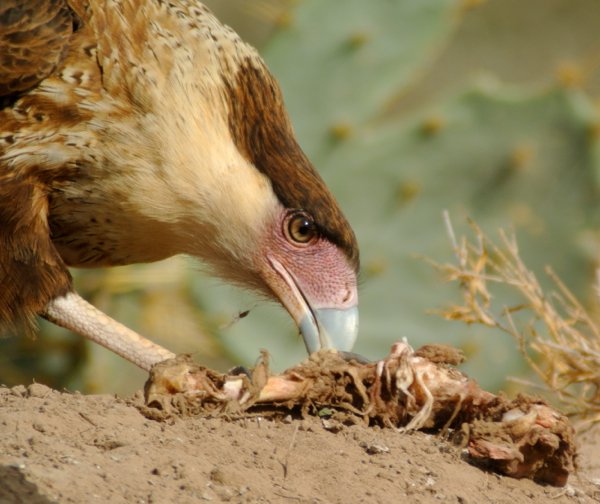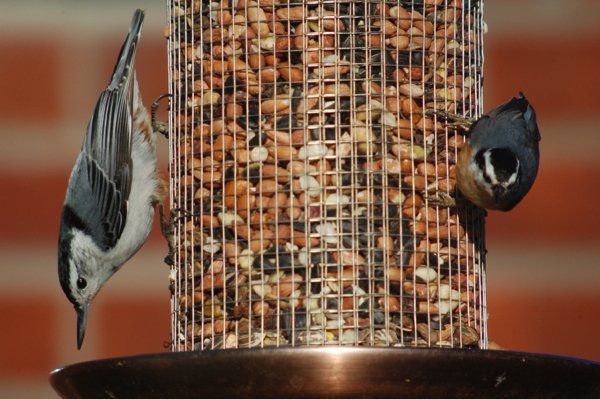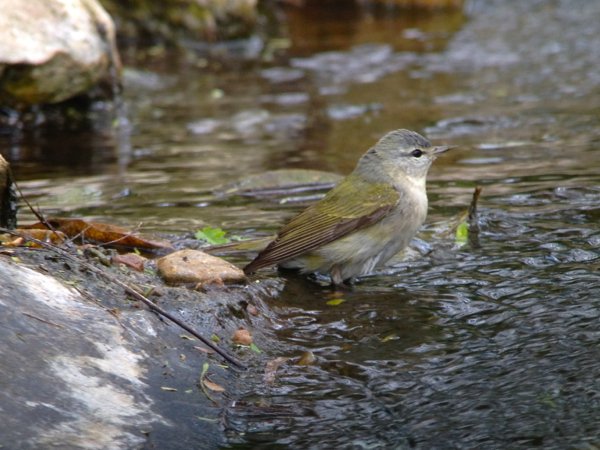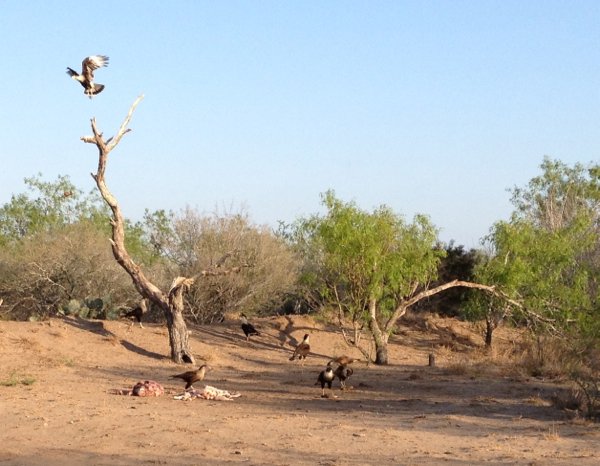
Bird feeding is a major industry. Lots of people do it, birders and non birders alike. It’s a wholesome activity that grandparents share with the kids. Parents are encouraged to do it to introduce wildlife to children.
We have citizen science projects like Project Feeder Watch headed by Cornell Lab of Ornithology.
This past winter was very good for the chance to see boreal owl species in the United States. Owls are cool looking birds that appeal to a mass audience, even people who are not birders. When people started heading out to see these owls and then get photos, some disturbing videos showed up. Here’s one of a Great Gray Owl:
http://www.youtube.com/watch?v=NBvr4zOE-gQ
That video angered me on a deep level. It angered a lot bird birders. There’s another video here that you can watch that has more of the same. I think what pissed me off most about that video was that as the owl flew in to get the mouse and they yanked it away–the blatant teasing with a live mouse (which is a whole separate area of ethics) was grotesque to me. Others were angry that owls are baited at all. And that leads me to wonder the, why is this ok? Or the following video:
So, I struggle with where is the line drawn. I know in my gut that the owl tease baiting behavior with the great gray owl is unacceptable. But where do we draw the line between an owl and feeding birds in the backyard? Would I still be angry if he let the owl have the life mouse? Was it because the owl flew on him?
I can’t throw too many stones there. I can’t resist feeding a few gulls when I go to the beach. As a matter of fact, the above is a photo of a Laughing Gull that I took last week while hand feeding them chips in South Padre Island. Is it ok with gulls? We chum for gulls and other seabirds on pelagic birding trips, so that’s ok, right?
We attract birds in all sorts of ways. This is a Tennessee Warbler that was drawn to a manmade stream at the South Padre Island Convention Center, a stream set up specifically to attract warblers, tanagers, vireos, etc so people can see them and even photograph them. There are other places that do this too. They have water set up so photographers can shots of birds, they may even have fruit and feeder stations ready so you can get shots of feeder birds. But if you are going to offer seed and perhaps live mealworms, why can’t you do that with birds of prey.
I recently had the chance to visit Martin Refuge that has all sorts of feeding stations set up to attract all sorts of birds. One in particular is for Crested Caracaras. Raw chicken from the grocery or spare animal parts from roadkill is placed out on this private property in front of blinds where photographers can spend the morning getting shots of caracaras, vultures and even the occasional Harris’s Hawk. I had a blast and I would go back in a heartbeat. Not only did I get some great shots of birds without stressing them, but I got to watch all sorts of behavior and calls I’d never seen before.
While watching it and having a great time, I asked myself, “How is this different from the owl video?”
And here’s the difference:
These birds (both the caracaras and the Pyrrhuloxias that visited the feeders while the caracaras fed) were well away from a road. Birds weren’t being attracted to a busy street. The birds were flying in and getting fed, not teased by having the food taken away. None of the bait offered here was live. The birds were so desperate for food that they would fly into a human to get a morsel of food.
I don’t have all the answers and human interaction with birds is something I struggle to understand. I enjoy feeding birds, I enjoy watching bird behavior. I especially enjoy photographing them without stressing them out. But where is the line with using food to see and photographing birds? Where do people draw it?


















I don’t have the answers, but I dug the post!
I think part of the reason there has been such a strong reaction against the owlbaiters is that raptors, particularly things like Great Grays, carry a lot of connotations of wilderness and wildness with them whereas songbirds, some anyway, are SUPPOSED to come to feeders, at least in our heads.
Here’s an easy rule of thumb: Feeding birds is wrong.
Backyard feeding, wrong. Baiting, wrong. Leaving garbage for gulls or ravens to pick through, wrong. Hand-feeding, very wrong! Chucking piles in the park to attract pigeons, very wrong! Throwing bread in a duck pond, very very wrong!!
If you want birds in your yard, do something right: Plant a garden that produces things birds like to eat. Plant some flowers that hummingbirds like. Plant some bushes that provide nesting area. Try to use native species as much as you can, and at least make sure you’re not putting down anything invasive.
Out of all the scenarios described, the only one I like is creating a little park with a stream to attract warblers (but, of course, not with “feeding stations” whatever those are).
“X” Sorry, but the exact kind of attitude that causes so many problems in our hobby. Many more problems than people feeding birds.
X, that is your choice, but even in the case of backyard bird feeding, it can still be called into question. This is from Live Science:
“A team of researchers from the University of Exeter and Queen’s University Belfast gave some groups of garden birds extra food in nest boxes, while leaving another group to fend for itself.
The birds given more to snack on in the winter months laid eggs earlier than the birds in the other group, and they had an average of one more nestling that flew away from the nest successfully.”
http://www.livescience.com/2269-study-feed-birds.html
I don’t know if there’s another form of ‘citizen science’ that’s as burdened by a fringe whose force consists of nothing more than emotion or an empty personalist view of nature as birding.
Luring the owl with a live mouse for the sake of photography, then taking it away when it struck, not cricket. But I fail to see what real harm was done to the bird.
X’s commentary is just some kind of PETA, Birding Division, emoting without any sort of reasoning. And unsurprisingly, it rapidly turns off point (what does planting native species have to do with this?)
Don’t feed this, don’t feed at all. Don’t mess with birds, by baiting or trying to hand feed (don’t feed birds rice or they’ll expode is my favourite myth in this world). Why exactly?
No doubt errors can be made in our interactions with birds (eg. feeding dabblers bread) but the harm surely needs some perspective (X, got some science on your side?).
I won’t even confess to the things I do when I make woodpecker feed each fall or what I do with my Audubon iPad app and its library of bird voices, for I’m already an anonymous member of the heretics identified by X.
Frankly, I’m weary of all this. statements about what individuals should or should not do around actually attracting birds (particularly in an urban environment) is just bourgeois self-absorption. The piles of black oil sunflower, peanuts, niger, etc. are wrong, very wrong, very very wrong how, X? I mean, explain it. Wrong, very, very very wrong, like DDT spraying?
I generally don’t have a problem with people feeding birds as long as they put some thought into it and put the birds first. People need to feed healthy food, first of all, and do it in a way that doesn’t put any of the birds or other animals in danger.
A lot of people at our local lake feed ducks bread all day long. This also attracts gulls and crows. When duckling season happens, mother ducks often bring their babies to these areas to get the bread and other junk food. Then, the gulls and crows grab the ducklings, too. One thing that can be done, in the least, is feeding food that the gulls and crows don’t like as much such as lettuce, peas, or duck food. Or, stopping feeding when ducklings arrive.
Another thing that happens is when people feed the ducks every day in the same spot at the same time, the ducks gather around as much as two hours early to wait to be fed, often when it’s still dark. The coyotes take full advantage of this. I wish people would just think of the birds a bit more than the experience of feeding them.
Hey, there’s nothing more wrong about feeding birds than paving a meadow. You take it upon yourself to modify an ecosystem as you see fit. Some animals will benefit from the changes; some will take detriment from it. My personal opinion is that the ecosystems are pretty messed up, and we’re not doing anybody favors by dumping food into them without thinking about consequences.
Will some birds do better if you feed them than if you don’t? Maybe! Will some birds get their heads pecked in by those other birds you fed? Maybe! Will your food actually get stolen by squirrels or rodents who kill birds? Maybe! Will the rapid change of food supply cause suffering and die-offs when it’s removed? Maybe! Will “wild” birds effectively become feral pets like the “wild” cats that roam around? Maybe!
The way native plants come into this is that most people feel bad about the way that human habitation has infringed on the native ecosystems to the detriment of the birds and other animals. By devoting part of your habitation space to native plants, you help restore part of the ecosystem that existed before your lot got clearcut to build your home on it.
By trying to think about sustainable ways of improving the environment instead of just dumping food into the ecosystem in an uncontrolled way, we can try to make it healthier and more interesting long term.
I’ve got a fairly long reply that came up when this discussion arose on a local listserv when it was discovered that Snowy Owls were being baited for the purpose of photography. I’ll try to summarize it as best I can, but it may still be a bit long:
1) Chumming during pelagics is an uncommon occurrence, decentralized, and is generally inaccessible to the general public that don’t otherwise know much about birds. It also somewhat mimics the birds natural behaviour if they were to come upon a whale carcass, large schools of fish, etc. Even if pelagics went out every day of the year, the likelihood of these birds being harmed by chumming is incredibly low.
2) Bird feeders are similarly non-invasive. Birds that visit feeders are foragers, and don’t generally receive the majority of their dietary intake from the food provided there. Consider also the general displacement of habitat caused by the humans inhabiting the area the feeders are set up in.
3) Birds of prey that are targeted for the purpose of photography by live-baiting are already on a stressed diet, as these usually occur during irruption years. It causes them to become habituated to humans, vehicles, and hunting close to roads. Another factor to consider is the possible parasitic load in the prey animals. While wild rodents are often parasite ridden, they are parasites the raptors can generally handle. That may not be the case with mouse, hamster, or rat parasites in animals that have been farmed.
Maybe a bit of the naturalistic fallacy in the nitty gritty of it. I’m a-ok with bird feeders, water features, and any other means to attract and help out birds who we’ve displaced with our activity. I’m even OK with chumming, or raptor feeding stations in an already protected area. What I’m not ok with is people going out of their way to habituate otherwise wild animals to behaviour that will put them at risk.
I’m sure I’m missing some key point, but this is definitely a “gut feeling” issue that I think everyone has to figure out where to draw their own line.
Jack, I disagree with your comment, “statements about what individuals should or should not do around actually attracting birds (particularly in an urban environment) is just bourgeois self-absorption.”
It’s fallacious to suggest that these discussions are the frivolous musings of the bored affluent. I’m not a member of the bourgeoisie nor are many others who rightfully question the ethical components of activities in which we are involved. Having some training at a wildlife hospital, I know that issues of human interaction and habituation are critical considerations in the welfare of all wild animals. Beyond that, every field has benchmarks for behavior, very often based in cogent, communal ideas of ethics and best practices.
In birding and wildlife photography (in which I partake), one cannot separate human actions from their effect on the animals in question. I personally oppose live-baiting for all of the reasons argued in this blog previously. What makes these stories and videos particularly egregious is that, with very few exceptions, questionable methods are used for the sole purpose of ego gratification, because that’s ultimately what it is, when a photograph or a sighting becomes that much more important than the animal.
It’s a subject I thought about touching on in my albatross post. Unlike the pelagic tours I did in California, pelagic birding trips in New Zealand use actual bait to attract birds and bring them in close (as opposed to just chucking popcorn off the boat to attract gulls and hopefuly more). In the case of petrels I think this isn’t unjustified; these birds have long associated the back of boats, a handful of small boats aren’t going to tip the behavioural balance any. Besides, it adds value to the local community, adding value and helping in their conservation.
Jack, while I disagree with X, I do think that the planting of native plants is absolutely relevant. Planting native plants is the least harmful way to get birds and other wildlife to visit. Where I live in Queens the city removed non-native weed plants from Kissena Corridor Park several years ago and replaced them with natives. The last couple of years have seen a massive increase of birds (in number and diversity) using the park, especially as a stopover site during fall migration.
I’m a bird photographer and I can only answer this question for myself. I consider myself to be a “nature” photographer and baiting just doesn’t fit that bill, whether the bait be food, electronic calls, stuffed owls or simple “setups”. I realize that what is “natural” can be a fine line but that is where I draw it.
Beyond that I agree completely with Ingrid (including what she said in response to Jack) and she said it better than I could so I’ll leave it at that.
I think, and said in my post on Owl Baiting, that one of the major difference between Owl baiting and backyard feeding, is that it (bating) is done solely to exploit the bird for a photograph. The baiters aren’t going out there day after day to toss mice at Owls just to see that they have a full belly. There is also the issue that these are live animals being used as bait, which carries with it the issue of introduction of non-native species into the environment, and the issue of it being done at roadways, putting the birds at risk.
On the photography side of things as Mike said in the post I linked to, anyone can take a great photo that way. I choose not to.
Dan Arndt- great summary! I totally agree with that. Although I think X is a bit extreme about the issue, senor anonymous (or maybe Charles Xavier?) does bring up excellent, valid points about providing natural habitat in the backyard. A friend of mine who lives in Normal, Illinois allowed fair portions of backyards at two separate houses to go sort of wild. He let native “weeds” grow in some areas and just did not rake the leaves in most of the yard (as a life-long entomologist, he was well aware of the important role played by this basic microhabitat for arthropods).
The results were very noticeable compared to neighboring yards, especially during migration as both yards turned into mini hotspots that have recorded just about every possible warbler (including Connecticut), Whip-poor-will, and many other birds over the course of 20 years. I distinctly recall seeing Rose-breasted Grosbeaks, Indigo Buntings, and native sparrow species feeding on the seeds of “weeds” during fall migration.
I agree with the point your, that humans for the last 10,000 years have been changing the face of the Earth for their own benefit, often without fully understanding the impact they have, and as a result, animals have developed “unnatural behavior”. Especially in the last few centuries. However, we are as much a part of this world as any other species, and in some cases, birds have evolved in response to human behavior (the case of the birds evolved to live in hedges in England comes immediately to mind). In any case, the mere existence of human settlement in the form of homes affects the behavior of animals more than feeding could. So, yes, feeding will effect the behavior of “wild” birds to a degree, but in the grand scheme of things, these changes are nothing compared to the destruction brought about by suburban construction. That said, feeding birds in a wildlife preserve or wilderness WOULD have profound effects, but feeding in the backyard? Not so much.
I’m surprised nobody has yet mentioned Star Trek’s “prime directive” concept!
Dan, Ingrid, and others have summed up the arguments wonderfully. Just to touch on a point that Ron Dudley brought up: is playing calls ever OK to attract birds? Is there a difference in playing the birds’ own call vs. playing predators’ calls? I would never have seen my only quick glimpse of a Pileated Woodpecker without this practice (someone else in my group did it), but I still feel conflicted about whether it’s kosher.
While I don’t think it’s harmful to feed sea gulls at the beach, I must say as a native Floridian few things are more annoying than when a tourist ruins a nice day at the beach by feeding the gulls. Because they tend to flock to any area with food, become very noisy, aggressive, and messy.
I consider it EXTREMELY rude to feed gulls at a public beach when others are around.
The blatant hypocrisy X is assuming that humans are different than other species. You speak as though your idea of the proper state of things is correct. Every species on earth attempts to mold the environment around it in a manner that favors themselves. Every species wages war, everyday and every way, on other species. Feeding another species does nothing more than craft our environment into something more appealing to the individual.
There are trees that poison the ground so that other trees cannot grow there. There are animals that kill for sport. Our environment is not a stable environment it is an evolving ecological wonder. Eventually something will come along and wipe us from this planet.
So it comes down to selfish morals and scruples. Morals and scruples that are forged from YOUR individual life and experience.
Very well put
I have to agree with you ‘X’. What people often don’t realize, is that feeding birds in ANY way, and indeed any wild animal, can be detrimental and should not be done. This, coming from an ecologist. Spread of disease at feeding sites greatly increases, especially if there is a fight/squabble over the food. Beak and feather disease is notorious, as are several diseases spread through fecal matter, and unnecessary wounds from fighting. Birds and others species become reliant upon these human-created sources of food, and if the human were to move away/forget to feed/die, the animals would also suffer. They lose their natural instincts because they have come to rely on these easier sources of food. Leaving rubbish out for animals to rifle through is very harmful to their health. Birds and other animals are not supposed to eat human foods….hell…even humans should not eat some of those rubbish foods! The animals get sick and suffer, even becoming overweight, and may end up consuming the actual rubbish if it smells/tastes like the food that was once wrapped within it. Urbanisation does NOT agree with all species, some adapt, however these are often considered pests by humans as they get into homes and buildings and scare away other natives e.g. possums, racoons, Indian miners, Crows etc. Besides, it’s littering. Ducks should not eat bread. Their physiology is not designed to deal with it. Hand feeding birds is also very wrong as X said, as it encourages the birds to become comfortable with humans and maybe even domestic animals (if say, your pet dog is around at the time). If the bird were then to become less afraid of humans, it is in danger of death/injury from other ‘less-than-kind’ humans, or humans who assume the bird will fly away and don’t worry to check. And no Jack, I oppose everything about PETA. They are utterly ridiculous and uneducated for the large part and it’s been proven they kill more than they save.
The best way to attract species, as X said, is to plant native plants and ensure cats/dogs etc are restrained properly.
And, after all that, if you don’t believe me, you can find all of this information in a great variety of peer-reviewed journals: the very same journals I had been using during my degree.